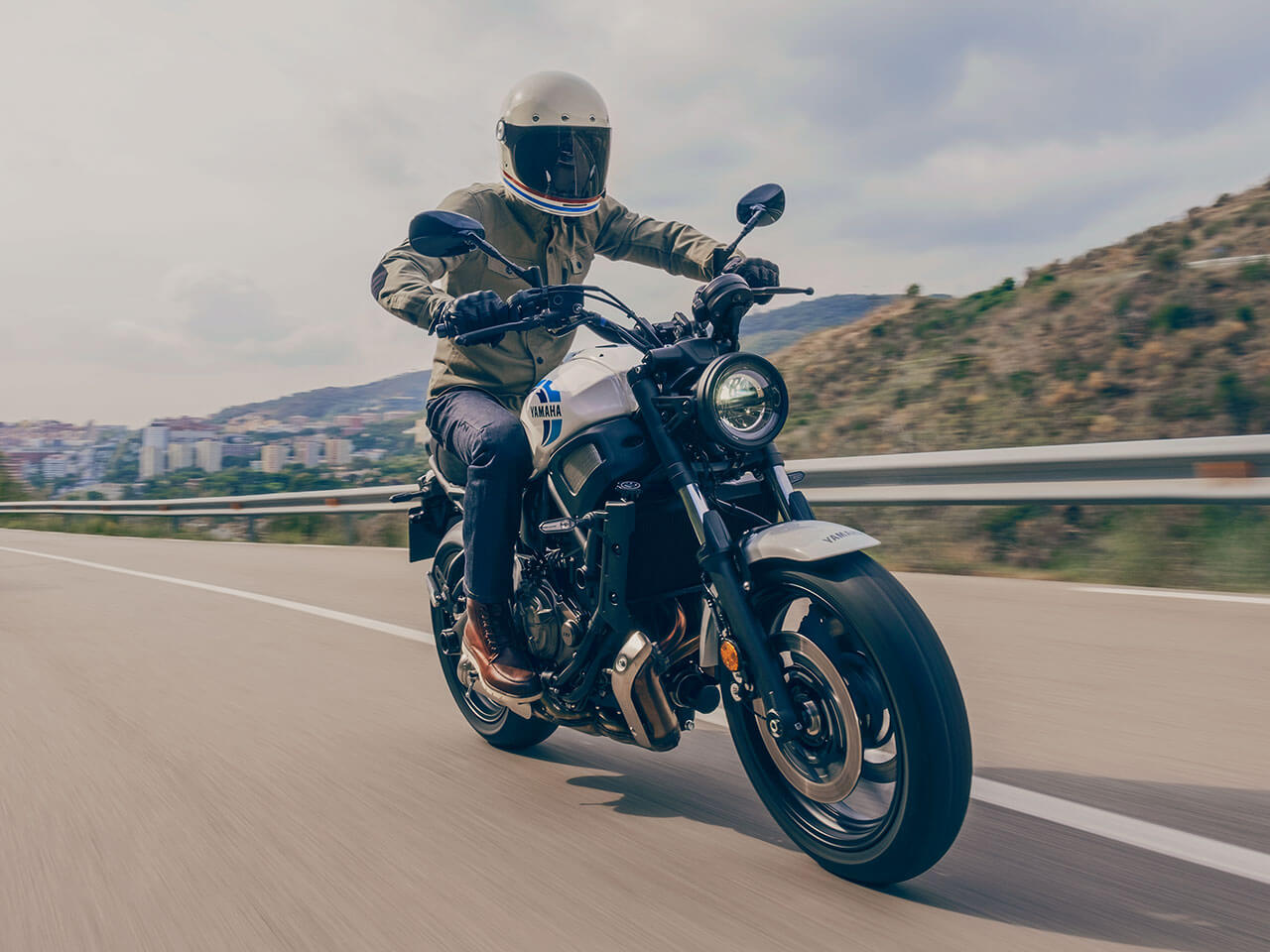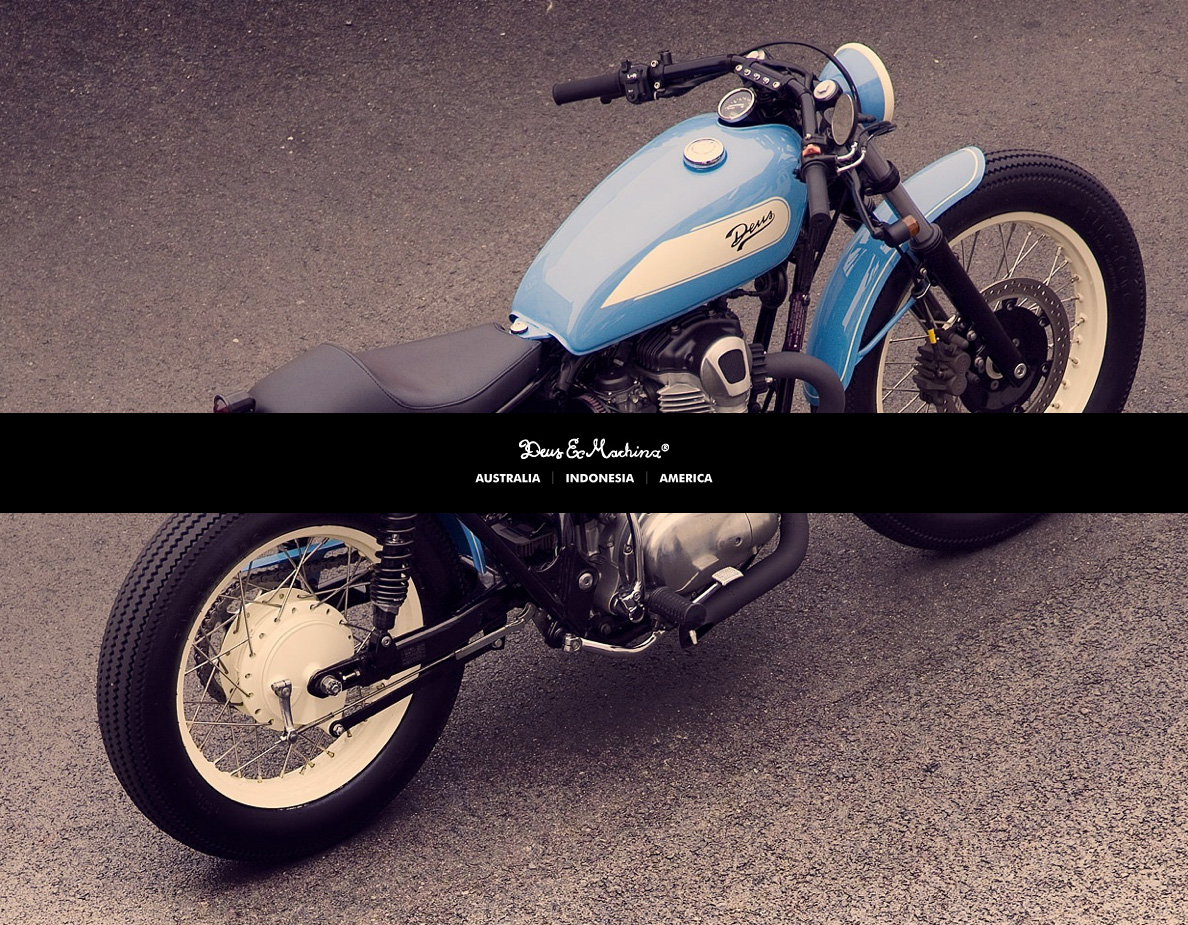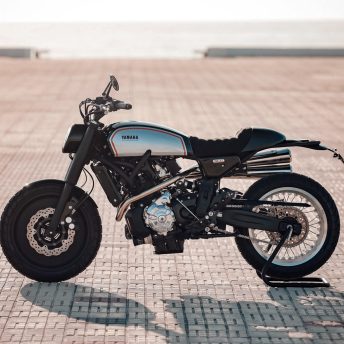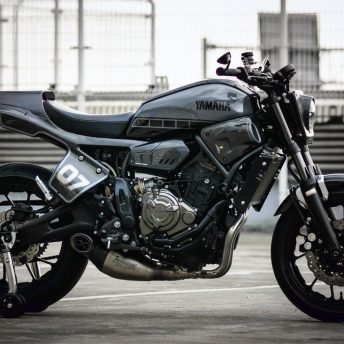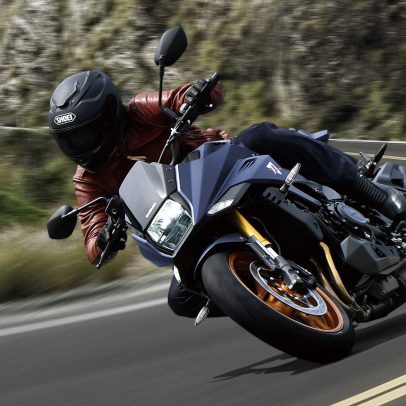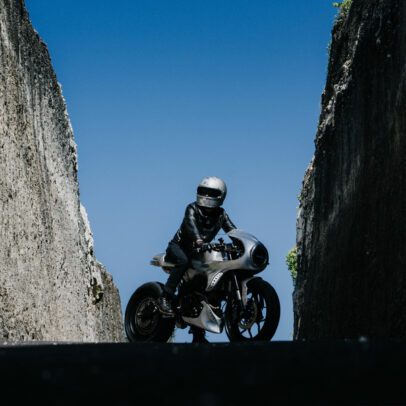Unless you’re living in one of those rule-free American states where they let tipsy 13-year-olds ride drag bikes on public roads without helmets, you’ll know what I mean when I say the dreaded words, “Beginner Motorcycle”. They’re the ones learner riders need to buy before they can get their hands on a big, proper bike. Now, when I was learning to ride, there were a bunch of well-known rules for these bikes.
Firstly and most importantly, they had to be really embarrassing. So embarrassing, in fact, that you’d park down the far end of the street and walk to the local cafe rather than be seen on one. Secondly, they had to be totally underpowered, almost to the point of being dangerous bikes to ride. Also, they had to have been owned by approximately 27 other riders before yourself and then passed down to you like some weird tribal ritual or rite of passage.
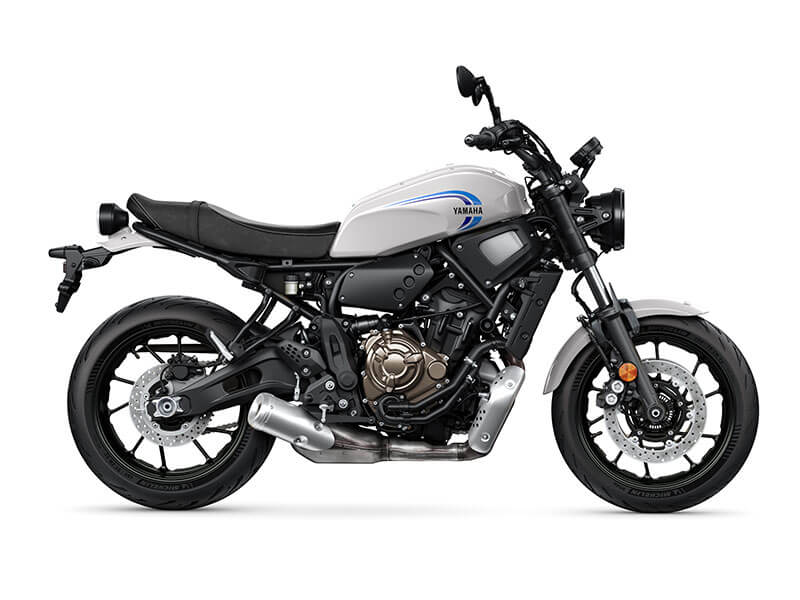
And lastly, they were to be sold off on the very same day you received your full, “I can buy a real motorcycle now” license and not a second afterwards. In many ways, they were a kind of test to make you prove to yourself and to other road users that you were serious about this whole riding motorcycles thing. So serious in fact, that you were willing to put yourself through many months—or even years—of shame, lack of usable power, and general crapness.
For what seemed like an eternity, manufacturers didn’t really seem to be able to get their heads around this issue. After all, they were selling plenty of these bikes, so all was good in the world. But what they missed was the fact that no one wanted to keep them, so they were shared around like joints at a college party—and as such, a single bike would be sold and then shared many times over. The result? Fewer sales for the manufacturers.
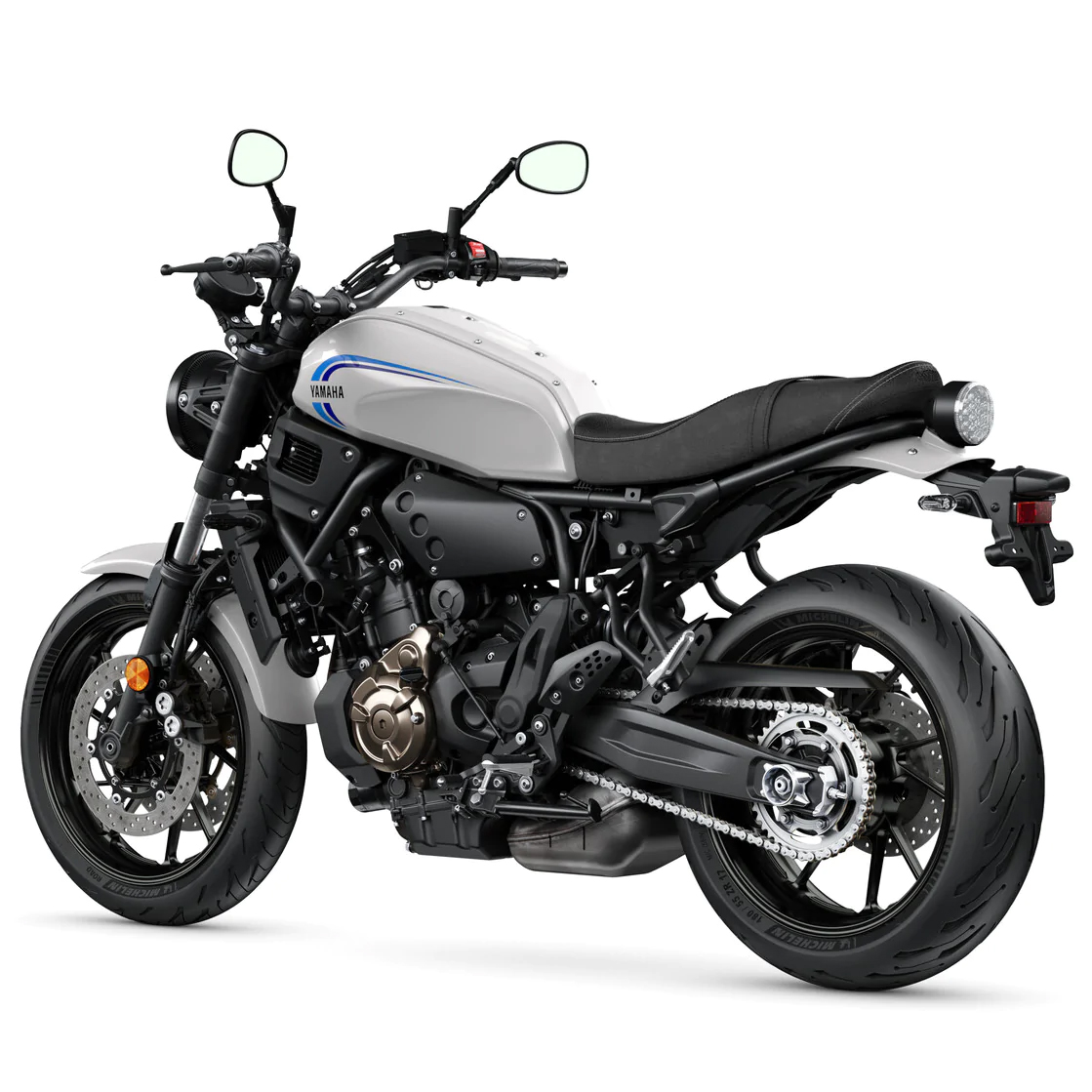
But then someone had a crazy idea. What if—shock; horror—a bike could be OK for beginner riders and look cool? And what if it wasn’t gutless, but instead had a useable amount of power and torque? That would mean you weren’t in danger when you were learning to ride, but once you were proficient, it would still put a smile on your face and wouldn’t need to be revved to a million RPMs up a hill. Enter, stage left, the Yamaha XSR700.
Specifications for the 2022 Yamaha XSR700
Now in its second generation, the Australian Yamaha XSR motorcycle series consists of two bikes: the twin 655cc 700 and the triple 899cc 900. We’ll focus on the XSR 700 here, but keep an eye out for the 900 review next month.
Some dry technical specs first: this model is unique to Australia insofar as its cylinders are sleeved and its intake is restricted specifically to pass the local LAMS (or Learner Approved Motorcycle Scheme) requirements, meaning that the engine has to be smaller than 660cc’s and its power to weight ratio must be less than 150 kw (or 200 hp) per metric tonne. So the Aussie XSR700 puts out about 7 kW (or 9 hp) under the full-cream OS donk.
The 2022 model has a new LED headlight, a larger front brake disc, and a revised cockpit layout. Its 11:1 compression and gallopy, 270° crossplane-cranked engine outputs 38.3 kw @ 8000rpm (or 51 hp) and 57.5nm @ 4000rpm (or 42 ft-lb), which compares to 55 kw @ 9000rpm (or 74 hp) and 68 nm @ 6500rpm (or 50 ft-lb) of the full power engine.
It weighs in at a beginner-friendly 186 kilos (or 410 lbs), it has a 14 liter (or 3.7 gal) tank, and it gets up to a top speed of about 190 km/h (or 118 mph). The factory tyres are Michelin Road 5s.
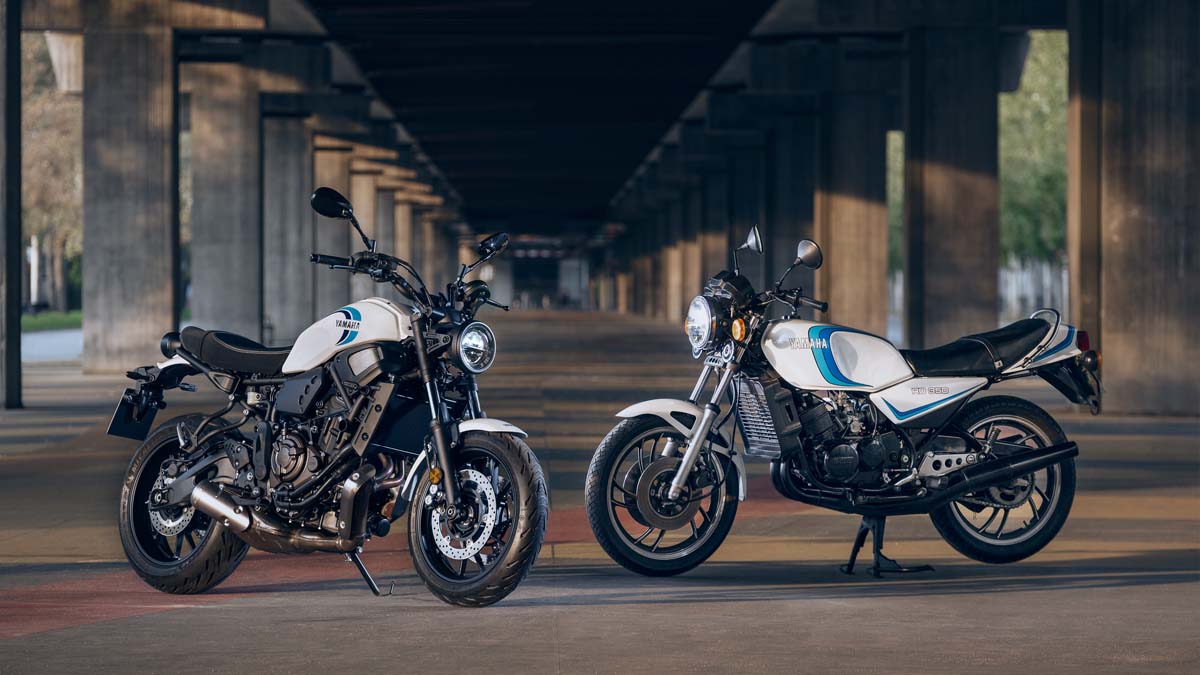
Among the other little details to note are the “Link-Type Monocross” rear shock, the UFO-like backlit LCD dash, and, in the case of this particular bike, the lovely retro paintwork that directly references the legendary 2-stroke Yamaha RD350LC from the early 80s.
The right-side-up forks are made by Yamaha and have two-pot Yammie brakes bolted to them. As usual, Yamaha’s fit and finish is spot on, and I noticed exactly zero zip ties, misplaced goop, or saggy wiring harnesses. So, with that out of the way, let’s ride the thing.
General Useability of the 2022 Yamaha XSR700
Around town, the XSR was pretty much perfect. It was easy to steer and really comfy without feeling like a sofa between your legs. I was sitting pretty and lane splitting like a boss in no time at all. The long seat had enough longitude to allow my not-so-slim butt cakes a decent amount of forward and backward adjustment. The mirrors worked well with minimal vibes.
The fuelling was spot-on and not at all snatchy or wanting. The dash has a couple of basic settings that can be cycled through via a switch on the bars or some up-and-down switches on the CD-sized circular cluster.
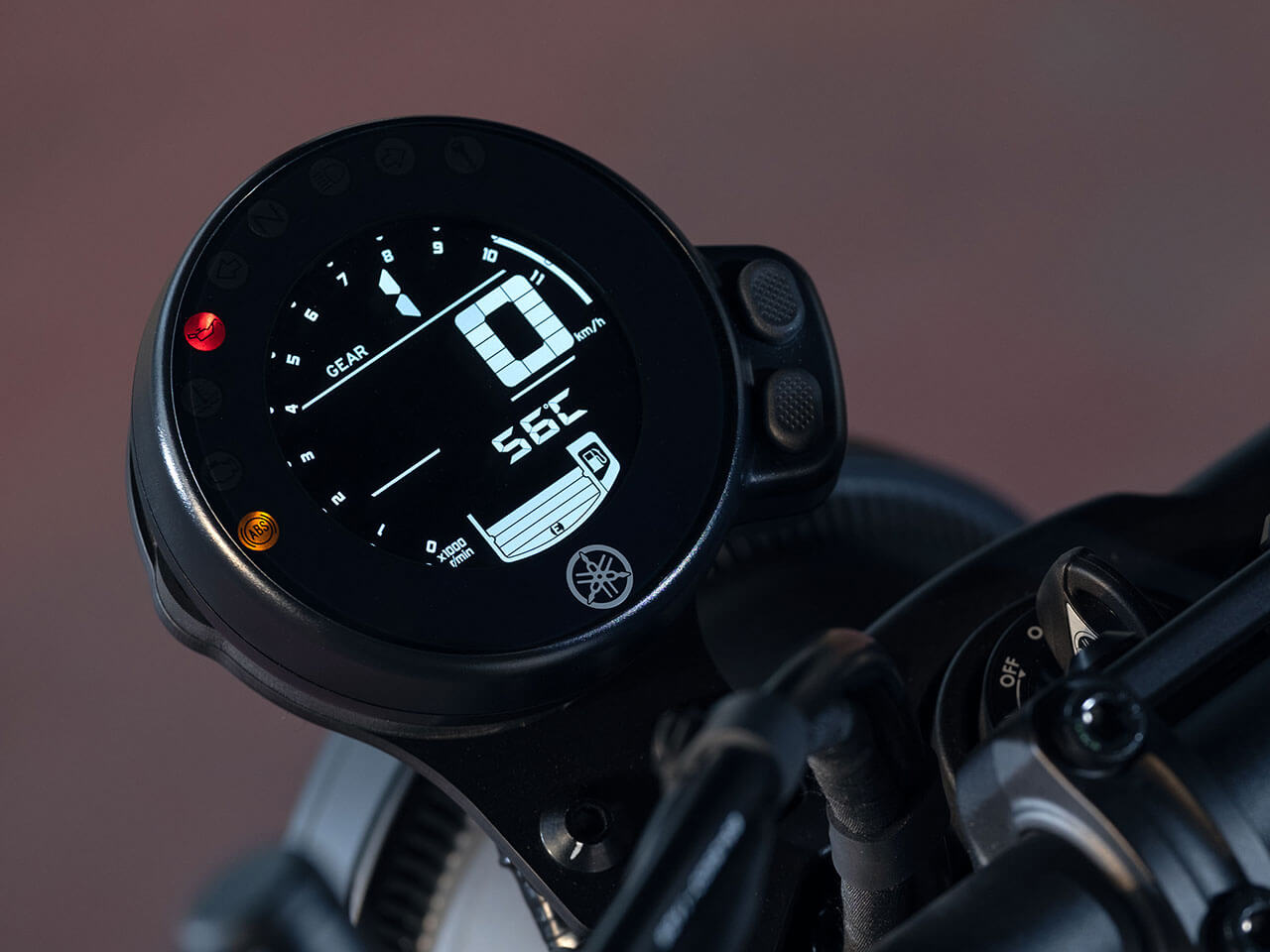
Oddly, these switches were located on the opposite side of the dash from where you would expect, so you’ll have to operate them with your right hand. At first I thought this was bad design, but then I figured that it’s probably to encourage the rider to use the bar switches while riding and to not attempt a—ahem—reach-around. That’s smart, though it did make me wonder why the switches were needed at all.
The 2022 Yamaha XSR 700 in the City
My stock standard test route here in Sydney involves riding south from the inner western suburbs until I hit the famous Royal National Park, or “the Nasho” to the locals, where the previous suburban streets and inter-suburban arterial roads become single-lane, rain forested twisties with posted top speeds of 80 km/h (or 50 mph). This gives you a pretty good mix of riding types that allow you to see how bikes handle stop-start traffic, urban cruising, some country straight-aways, and some of the best twisties in the state.
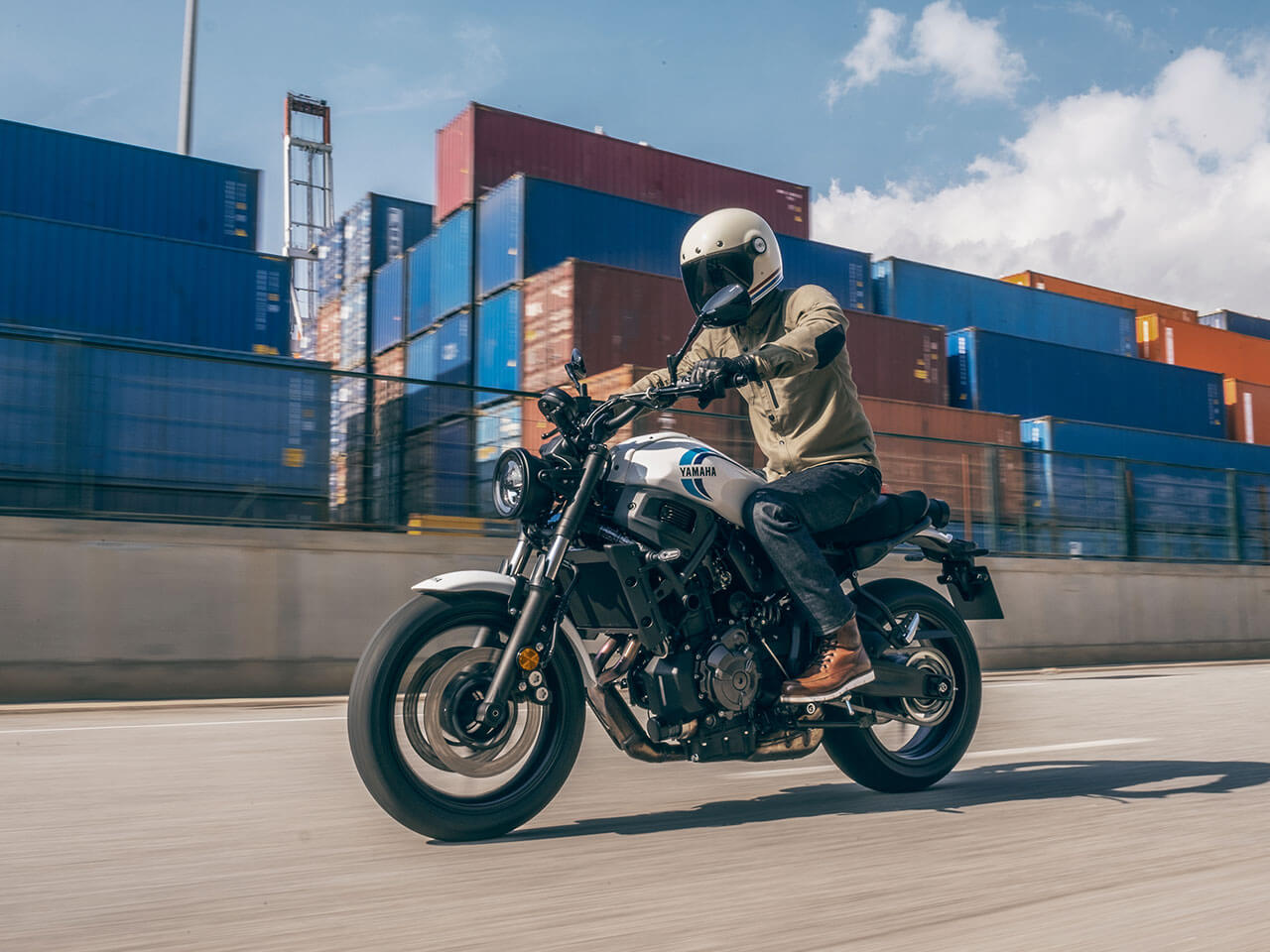
First thing I noticed was just how damn light and agile the bike was. What’s important to note (and this is something that most reviewers don’t do) is that my regular ride—which, by default, sets my muscle memory “standards”—is a BMW RnineT. At 30-something-odd kilos lighter, of course the XSR700 felt lighter to me. But I think it was more than that. It’s immediate “rightness” in terms of seating position, and what the bike did as I was maneuvering it out of my garage and up the driveway gave me an instant amount of comfort and security that usually takes time to arrive with bigger, badder bikes.
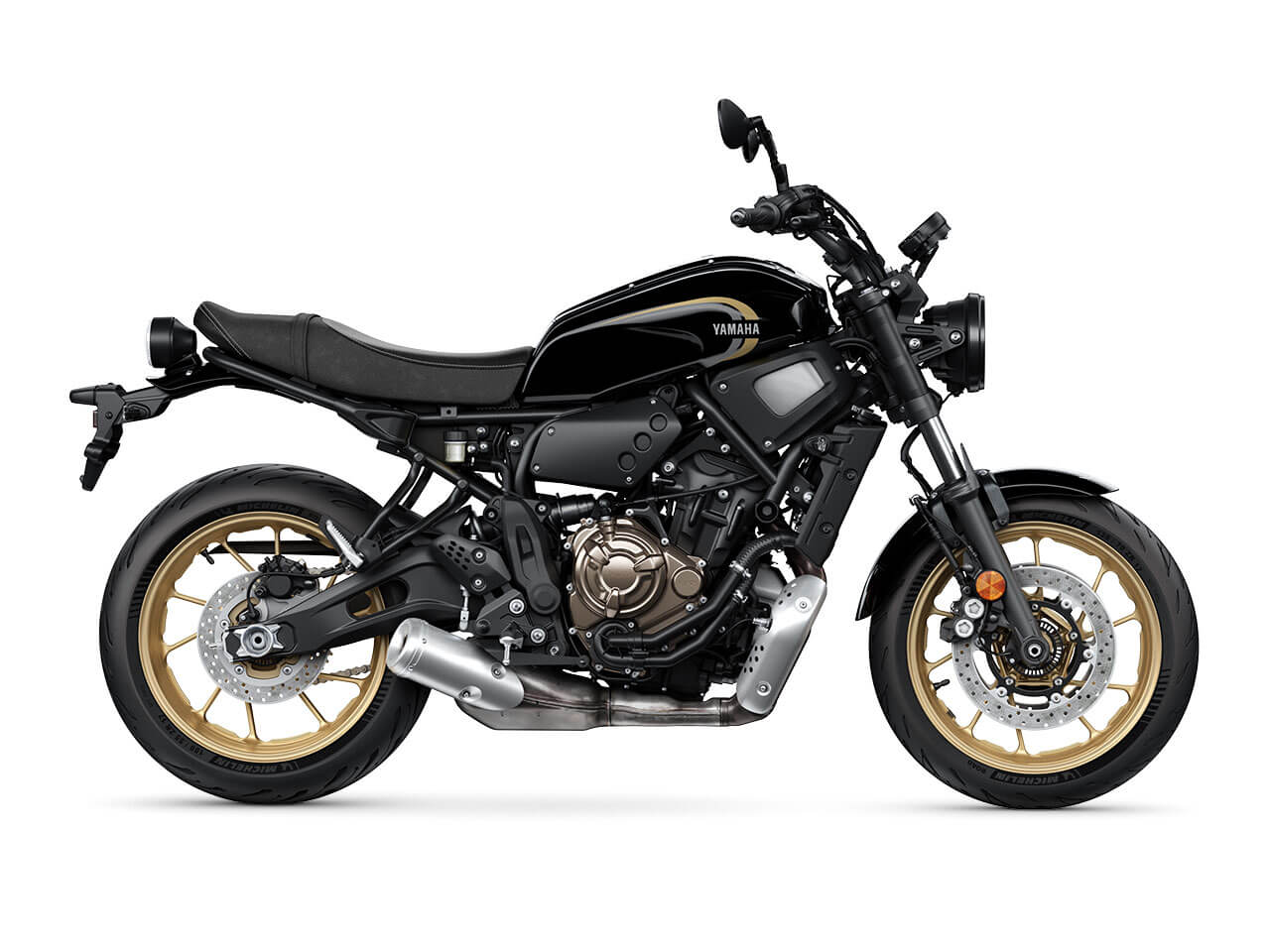
My second observation was the noise. I probably should have added this to my opening gambit about rules for beginner bikes, but they almost always sound like crap. That, or they attempt to sound cool but fall short in a kind of comedy big bike imitation. But the 700 sounded pretty damn good; think meaty twin exhaust note that wasn’t too loud or muffled, mixed in with a pleasant mechanical whir. No, it’s not going to make you cream your Kevlar motorcycle pants, but I quite liked it.
Riding the 2022 Yamaha XSR 700 in the Curves
Once on the more open, less trafficked roads in the Nasho, I hunkered down for some cornering antics and higher speeds. Bikes intended for beginners will often show their shortfalls here, as their suspension set-ups are usually cheaper and biased towards comfy urban situations. Subsequently, they’ll feel a little soft and ponderous when pushed harder through corners at higher speeds. But not the XSR. While it was definitely no R1 liter bike curve-cutting scalpel, it did what it had to do pretty damn well.
No squats. No vagueness. No complaints. And while it wasn’t about to deep fry my brain with its physics-defying power and acceleration, I never once had to wring its neck to get it to do what I wanted it to, brakes included. How’s that for redefining what a beginner bike is? And how’s that for a restricted beginner bike? Color me impressed.
I know I probably don’t need to say this, but I will anyway; if wrist-breaking torque and wheelies are your thing, this isn’t the bike for you. But maybe you’ve already got a garage companion that does that and you really want something more economical and comfy to doddle around town on? Then this would be a great option.
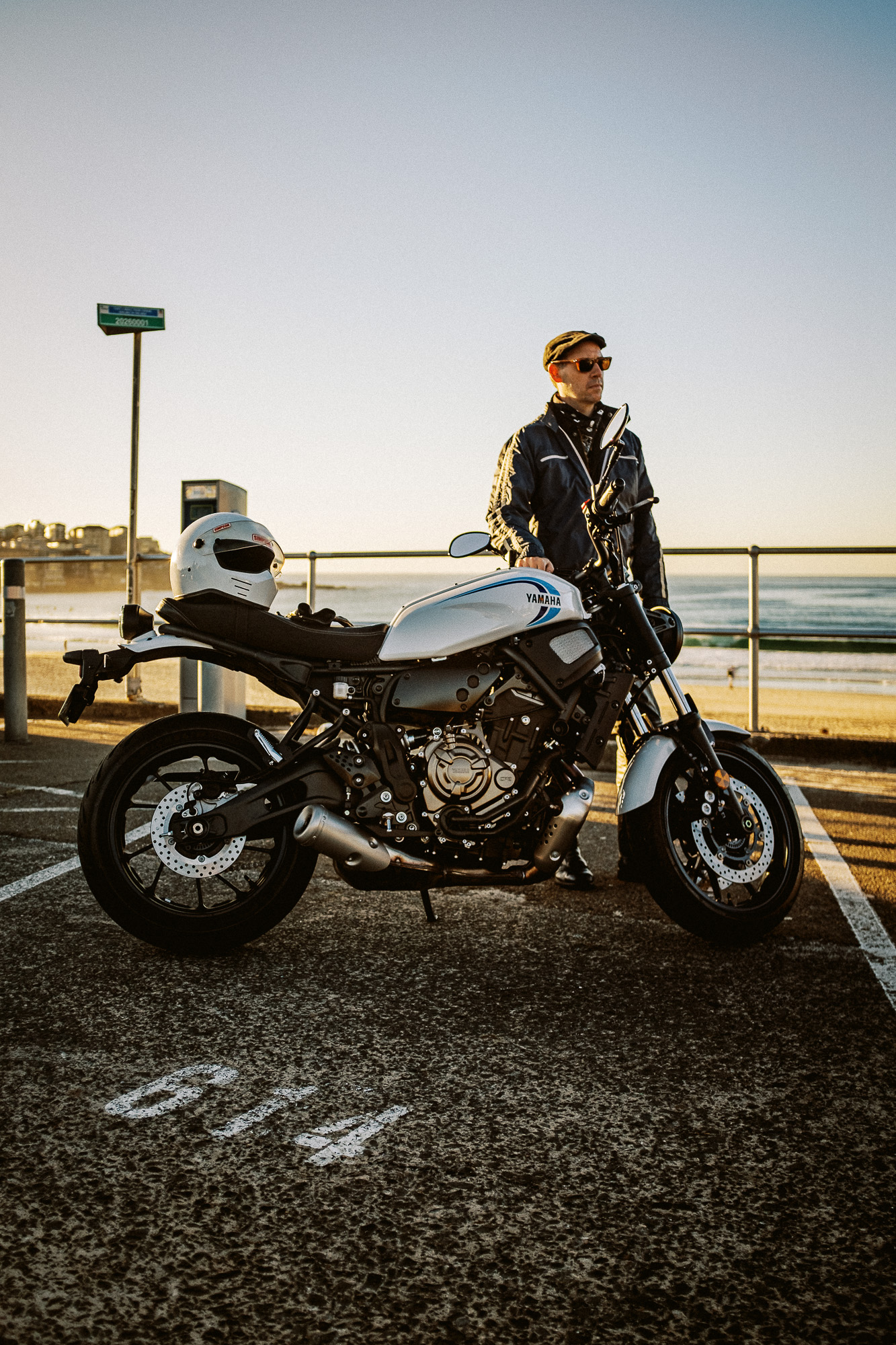
And since I was riding on a cold Sunday morning in winter, here’s an amusing little side note, thanks to the bike’s outside air temp reading. The temperature at the entry to the Nasho was a chilly yet manageable 13˚C (or 55˚F). But once I was in the subtropical-rainforest-y core of the run, it had dropped to a finger-stinging 6˚ (or 43˚F). Time for my gloved hands to be warmed on the engine and/or on the cool, stubby silence, and to seriously rethink the popularly-held belief that rainforests are always warm and wet.
Lighthouse Mode on the 2022 Yamaha XSR700
Soon I was at the Bald Hill cafe at the southern end of the Nasho, whereupon I parked up this little blue-and-white beastie in favor of a coffee and some iPhone notes. Standing back and looking at the bike, I did note one additional thing that I figure needs mentioning. In my eyes, the bike’s side panels seem a little awkwardly placed.
Specifically, I’m talking about the three-holed side panel that sits directly under the rear of the tank. It’s probably just the designer in me, but I couldn’t help but feel that they needed to be under the seat and not so far forward. No, It’s not a deal breaker (and yes I’m a bit anal-retentive), but here they seem a little misplaced.
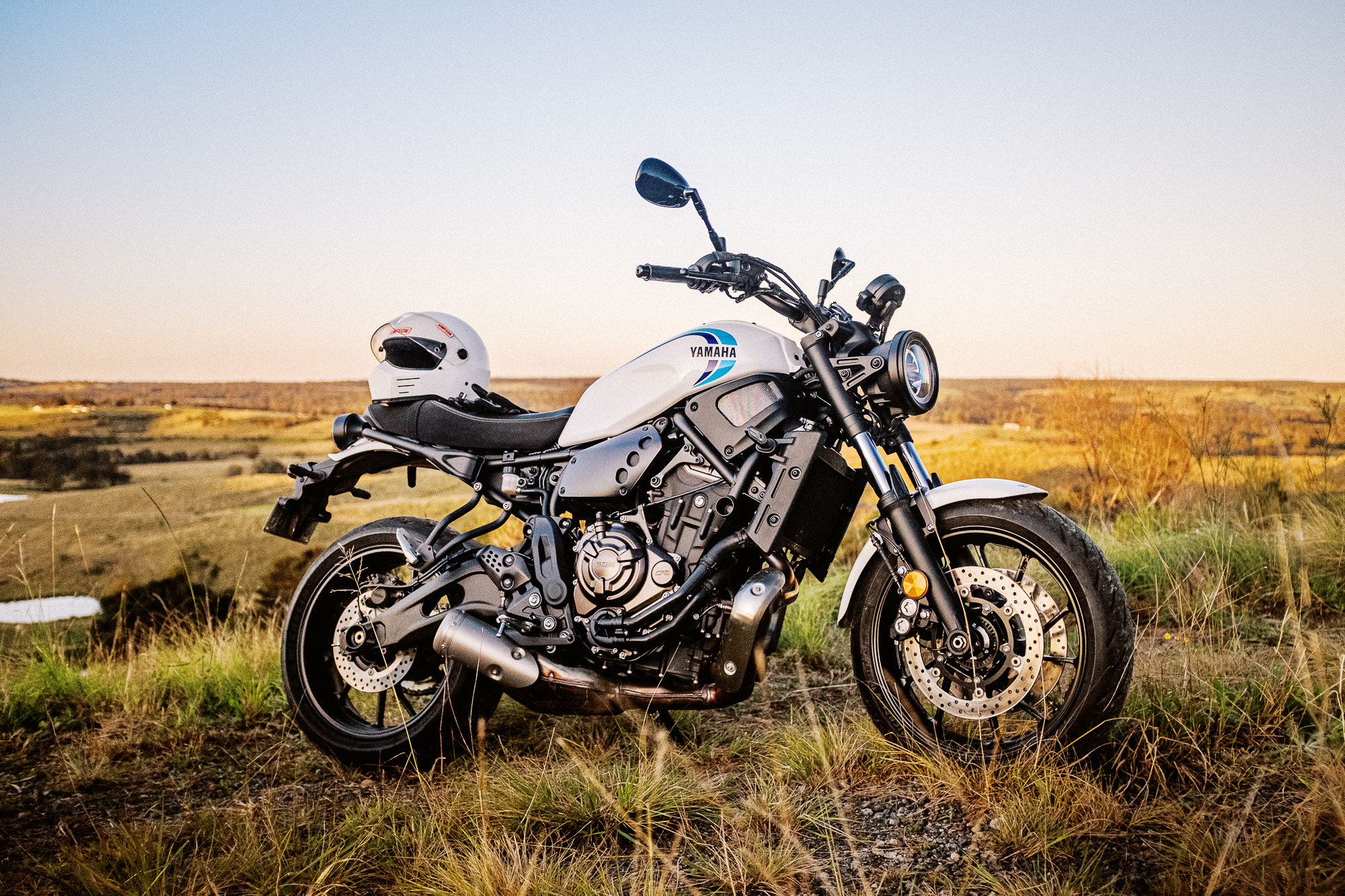
The only other negative I noted was by chance after visiting some mates and staying for a little longer than expected. Yes, there were beers involved. What are you, my mother? But that’s not my point here. Leaving their place as the sun started to set, I immediately noticed that the dash was pretty damn bright; it was all wine and roses during the day, but as the sunlight faded, the dash didn’t. Now my BMW is a more expensive bike and all, but its dash has a built-in sensor that lets the backlight adjust from day to night so that its displayed info remains legible but unobtrusive all of the time. But not so on the XSR700.
As the sun went down, the glare of the dash increased to the point where it was distracting me. Maybe there’s a setting on the dash that I didn’t know about—but then again, you don’t want to be constantly adjusting something like that, do you?. Or maybe there’s something in there somewhere that allows a compromise that works day and night? Whatever the case, it was a bit frustrating on my brief night ride.
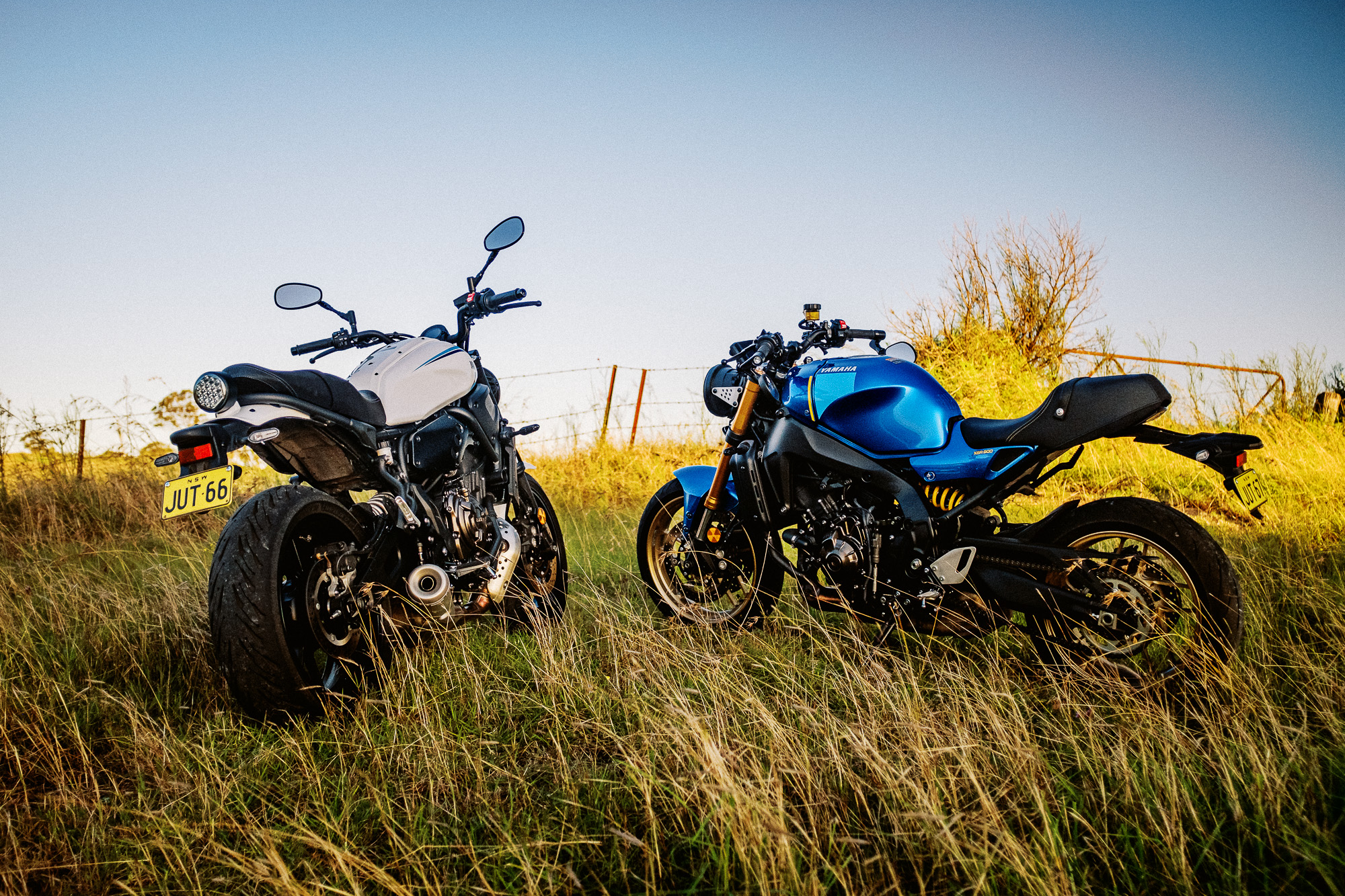


Final Thoughts on the 2022 Yamaha XSR700
But let’s stay focused here. Minor quibbles aside, this is a genre-breaking bike. And that’s because it’s a bike that would serve a beginner rider very bloody well, but then go on to remain a useful, usable, and smile-inducing ride well beyond that crucial “full license” checkpoint. It’s also something that I wish I’d had in my learner days. I’m actually a little jealous of it. Just think of all the saved embarrassment and the unbruised ego?
Better yet, I’d go as far to say that with a bike this capable and well-designed, most beginners will come out the other side of their learning experience better, more capable, and more competent riders. And that’s because the XSR700 is a much better, capable and competent motorcycle than the lame, infuriating learner bikes it’s just sent the way of the dinosaurs. It’s enough to make you want to be a learner all over again. Way to go, Yamaha.
2022 Yamaha XSR700 Overview
General Info
|
Main Specs
|
Competitors
|
